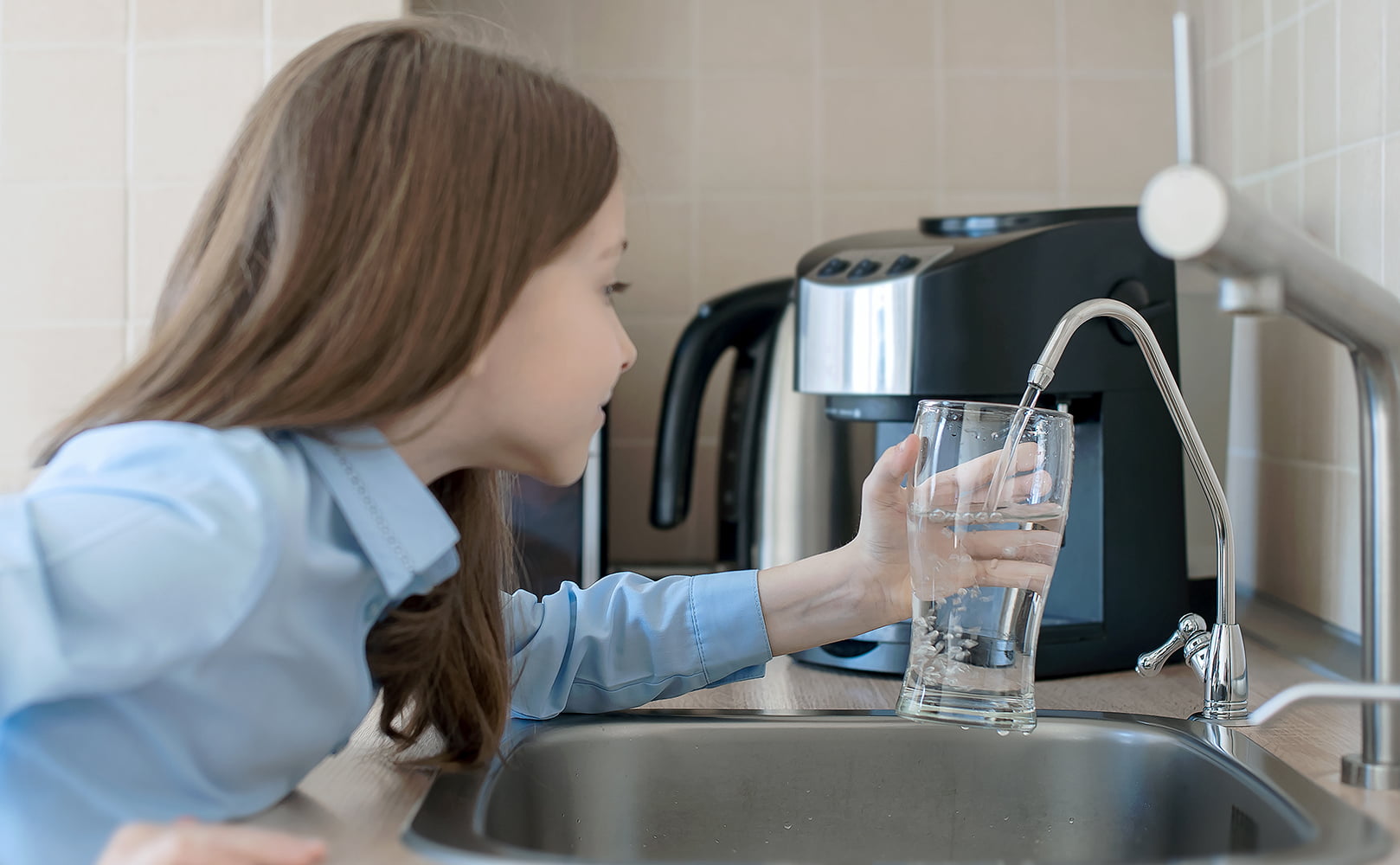Air Gap vs Non-Air Gap RO Faucet – Which to Choose?
Written by: Alexandra Uta // Last Updated: Feb 8, 2023
This page may contain affiliate links. If you buy a product or service through such a link we earn a commission at no extra cost to you. Learn more.
A reverse osmosis faucet is designed to work in synergy with an RO water filtration system.
When selecting yours, there are two different kinds to choose from: Air gap or non-air gap RO faucets.
It is more complex than choosing the one you like the look of best. You may need to have a specific kind depending on your setup and the local plumbing codes in your area.
So, air gap vs non-air gap RO faucet, let’s break it down so you know which one is suitable for you.
Key Takeaways
- Air gap vs non-air gap RO faucet, when deciding which kind of faucet to use with your reverse osmosis system, the decision may already be made for you. If you live in an area where a local plumbing code dictates an air gap faucet as a requirement, you should use one.
- If not required by local plumbing codes, you are free to choose between air gap and non-air gap RO faucets.
- The purpose of an air gap RO faucet is to prevent back-siphoning of wastewater into the reverse osmosis system in case your sink’s drain pipe is clogged. The wastewater could contaminate and damage said system, especially the RO membrane.
- You won’t need an air gap faucet if your RO system is located in a different area from your faucet.
What Is a Non-Air Gap (Regular) RO Faucet and How Does It Work?
A non-air gap RO faucet is the “regular” kind of RO faucet. It has one tube at its base that carries the purified water from your storage tank (or the RO system directly) right up and out for use.
What Is an Air Gap RO Faucet and How Does It Work?
An air gap faucet has three tubes.
- One carries the filtered water through the faucet for use.
- One carries the drain water which is being produced by the RO membrane upward and into the faucet stem. Here, the drain water falls through an air gap. This air gap is a literal hole in the faucet and drain line.
- Once past the air gap, there is another drain line for the water to go back down and be disposed of as wastewater (this drain line directly connects to your sink’s drain pipe). The downward wastewater drain line operates using gravity, not pressure.
Why the air gap? It’s like a siphon break and its function is to make sure, in the rare chance your sink’s drain pipe becomes clogged, that your RO system doesn’t pull wastewater but air into the unit. Pulling wastewater would put your system and especially the reverse osmosis membrane at risk of contamination.
What’s the Purpose of an Air Gap Faucet?
Again, the purpose of an air gap RO faucet is to make sure that no water from a blocked sink can siphon backward into your reverse osmosis system, thus preventing the system from potential contamination.
Air Gap vs Non-Air Gap RO Faucets – Differences, Pros & Cons
Aside from the functional differences above, the main difference between air gap vs non-air gap RO faucets is that the former has three tubes as well as an air gap, while a non-air gap RO faucet has only one tube.
While the air gap faucet may be a better option to prevent contamination of your RO system, they both come with some pros and cons.
RO Faucet with Air Gap Advantages
- Reduce the possibility of wastewater or sewerage backflow into your RO unit
- Depending on the plumbing codes in your area, you may be required to use an air gap faucet to comply with the regulations.
RO Faucet with Air Gap Disadvantages
- Air gap faucets can be noisy, and gurgle quite a bit.
- Water can flow out of the air gap and onto the sink or countertop if there is a blockage in the drain line. Unfortunately, this can happen quite a bit. RO faucet lines are so small that they can become easily blocked with bits of food, debris, and sediment buildup.
- The faucet installation is more complicated and requires a larger hole to be drilled in your sink to accommodate the three tubes.
Regular RO Faucet Advantages
- Regular RO faucets come at a lower price point.
- The design is more straightforward and requires a smaller hole in your sink.
- The tube is bigger and less likely to become clogged.
- They are easier to install.
Regular RO Faucet Disadvantages
- There is a risk that the RO system could become contaminated or damaged if the wastewater backflows.
- Non-air gap RO faucets may not be compliant with the local plumbing codes.
How to Identify Air Gap and Non-Air Gap Faucets
As a general rule, non-air gap faucets have one tube at the base, and air gap faucets have three. Air gap faucets also contain a hole in the body – the air gap. Non-air gap faucets will not have this hole.
When to Use an Air Gap RO Faucet
If your local plumbing code requires you to use an air gap faucet with your under sink reverse osmosis system, you will have to use it. It would be best to contact a plumber in your area to see if this is a requirement.
An air gap faucet is not required for countertop or whole house reverse osmosis systems.
When Not to Use
You cannot use an air gap faucet if your RO water filtration system itself is located too far away from the faucet. So, if your system is located in a utility room or basement, there is no point in having an air gap faucet as the unit itself is far away enough from the sink drain to avoid backflow and possible damage. In this case, you could use a check valve.
Can I Replace an Air Gap Reverse Osmosis Faucet with a Non-Air Gap Faucet and Vice Versa?
Yes, you can switch your air gap RO faucet for a non-air gap faucet, provided you are not violating the local plumbing codes. Of course, you can also switch from a non-air gap faucet to an air gap faucet.
However, you need to remember that air gap faucets use 3/8” tubing to connect to the drain saddle, whereas with non-air gap faucets the drain tubing is ¼”. So you may require an adapter to fit your 3/8” drain saddle connection to a ¼” drain line.
Tips for Installing an Air Gap RO Faucet
Installing an air gap faucet is a little more complicated than installing a non-air gap faucet.
The first thing to consider is that the air gap faucet has a small hole in it so that water can get out if the drain becomes clogged. This hole needs to be in an area where it isn’t likely to get clogged with any debris. Therefore, the positioning of the faucet is particularly important.
The second is to remember that the air gap faucet will require a larger hole to be drilled into your sink, which needs to be taken into account when you are planning the layout of your RO system.
Also, since air gap reverse osmosis faucets can leak water through their hole, the surrounding area should be waterproof.
If you have any questions about air gap vs non-air gap RO faucets please don’t hesitate to leave a comment below!
Information provided on BOS is for educational purposes only. The products and services we review may not be right for your individual circumstances.
We adhere to strict editorial guidelines. Rest assured, the opinions expressed have not been provided, reviewed, or otherwise endorsed by our partners – they are unbiased, independent, and the author’s alone. Our licensed experts fact-check all content for accuracy. It is accurate as of the date posted and to the best of our knowledge.



